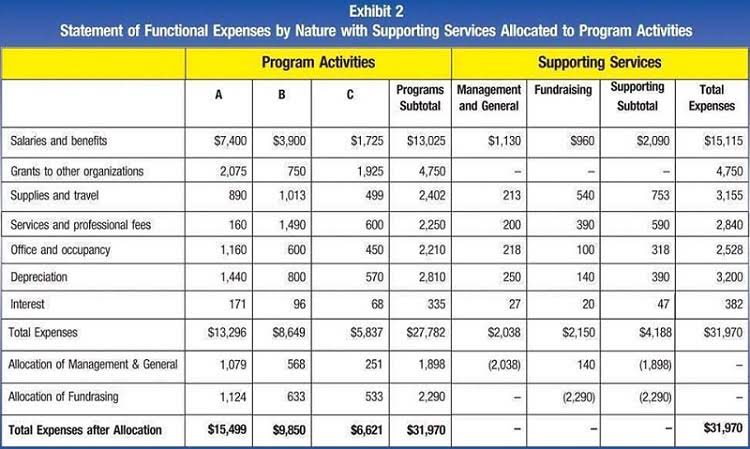
This creates a better matching of costs to the revenues earned in a given month or year. It allows for more https://www.bookstime.com/ meaningful financial management that isn’t influenced by the ups and downs of cash flow. Interestingly, tax deductions can ease the burden when used correctly—yet not all lawyers are up-to-date on their tax deductions. Many lawyers go to one or the other extreme—they either claim everything (and possibly more than they’re allowed to), or they’re so afraid to overstep they miss out on tax deductions.
A Guide to Legal Trust Accounting in QuickBooks and Clio for Lawyers
- If you’re a lawyer in Texas, check out our comprehensive guide, What You Need to Know About IOLTA Accounts in Texas.
- Law firms should first be sure to follow the general ledger best practices applicable to all companies.
- Each subledger is focused on one of the general ledger accounts, such as accounts payable or accounts receivable.
- A general ledger system also positively impacts client relationships, providing transparency and building trust through clear documentation of billable hours, fees, and expenses.
- Trust accounts are one of the most common areas where legal accounting mistakes are made.
- Also, certain complex transactions, such as those involving client trust funds or partner distributions, require an understanding of both legal and accounting principles.
- By establishing clear policies and procedures for transaction recording and leveraging automation tools where possible, law firms can minimize errors and ensure adherence to regulatory requirements.
Managing a law firm chart of accounts and general ledgers involves numerous transactions, strict regulatory requirements, detailed reconciliation needs, and accurate financial reporting. Let’s take a look at some practical advice and strategies to simplify the creation and maintenance of these crucial accounting components. Having a law firm chart of accounts is more than just an accounting best practice— it’s a tool to keep your firm’s financial data organized.
Law Firm Accounting – Structure of General Ledger Chart of Accounts
- Leveraging law practice management software with accounting capabilities, like CosmoLex, can help you automate accounting workflows, reduce data entry errors, and streamline reconciliation and financial reporting.
- Bookkeeping for lawyers allows law firms to collect key financial data, but much of the value of that data comes from how you analyze and use it.
- The general ledger plays a significant role in cash flow management by providing a clear picture of income and expenses.
- Failure to track cash flow can lead to liquidity issues, jeopardizing the firm’s ability to meet its obligations.
- By accurately recording, categorizing, and reconciling financial transactions, law firms can maintain financial transparency, ensure compliance with ethical and regulatory standards, and make well-informed business decisions.
- It also encompasses creating and managing budgets, producing financial reports, and managing payroll.
As previously noted, trust accounting is the process of law firms tracking and monitoring client funds that have been held in trust. Modern law firms often use various law firm chart of accounts financial software tools to manage their accounting needs. The general ledger integrates seamlessly with these systems, ensuring that all financial data is synchronized across platforms. Accounting software can streamline the entire process of general ledger management.
Why bookkeeping and accounting matter for law firms
Using technology—such as QuickBooks Online and Clio Manage together—also make this process easier and more efficient. Your law firm chart of accounts should also track amounts that your firm uses for client expenses, where you expect Accounting Periods and Methods reimbursement at some point in the future. These amounts include reimbursable client costs, non-reimbursable client costs, and advanced client costs.

If accounting for lawyers seems intimidating, a robust knowledge of the basics can help every practice avoid common mistakes. Familiarize yourself with the generally accepted accounting principles (GAAP) for financial statements that are complete and comparable. Then, review your general ledger to better understand your law firm’s financial transactions. Once you’re geared with this information, refresh your knowledge on how to read the critical financial statements for your practice, like the income and cash flow statements and balance sheets. From here, review common issues that complicate accounting for lawyers, so you can better navigate your financial management process and avoid the challenges other practices may face.
- While the specifics can vary by jurisdiction, when using an IOLTA account, any interest earned on the account is collected and forwarded to the state bar (usually to funds for social justice).
- These are errors that unintentionally offset each other, masking the underlying mistake.
- The insights gained from these reports are vital for financial analysis of the law firm and for strategic decision-making.
- Examining common transaction types provides insight into how specific events are recorded.
- This automation reduces the chance of error and cuts down on time spent on manual data entry.
General Ledger in Accounting: What Every Law Firm Needs to Know
This makes it challenging to use a general accounting solution for a law firm. This means setting up your chart to include as much relevant information as possible. You may choose any recordkeeping system suited to your business that clearly shows your income and expenses.
Streamline General Ledger Management with CosmoLex

With features designed for the legal industry, RunSensible automates transaction categorization, simplifies account reconciliation, and accurately tracks client retainers and trust accounts. By reducing the reliance on manual data entry and offering real-time financial insights, RunSensible minimizes the risk of misclassification, untracked expenses, and compliance issues. This automation enhances accuracy and helps firms maintain transparency, efficiency, and compliance with ethical and regulatory standards, all while fostering financial stability. General ledger accounting, including law firms, is a central component of any business’s financial accounting system. It involves recording, summarizing, and organizing a firm’s financial transactions into a system of accounts.
What to look for in a legal bookkeeper

Retainers should be recorded as liabilities until the services are provided. Consistent and accurate data entry is the foundation of effective law firm financial management. Every transaction, no matter how small, should be recorded promptly to maintain the integrity of the financial data. In law firm accounting, both journals and general ledgers play crucial roles, but they serve different purposes. Journals are used to record transactions as they occur, in chronological order.

